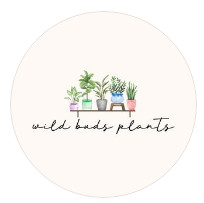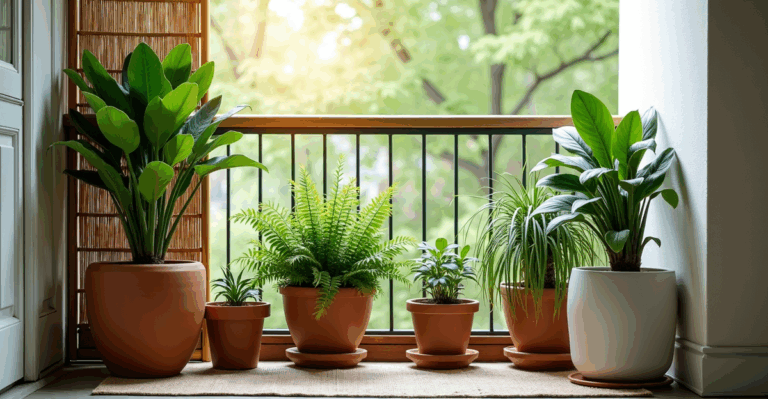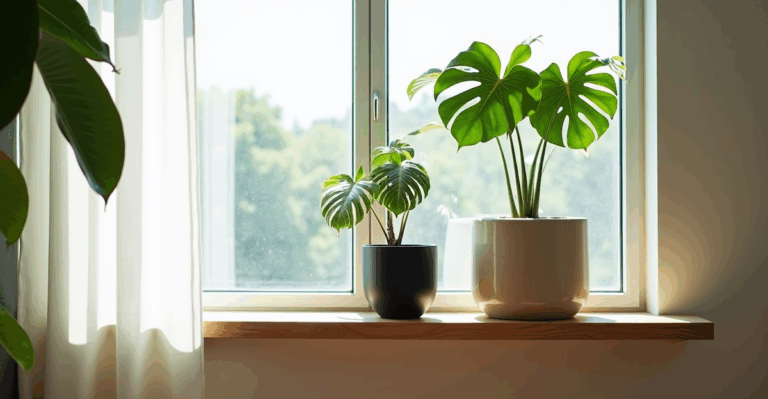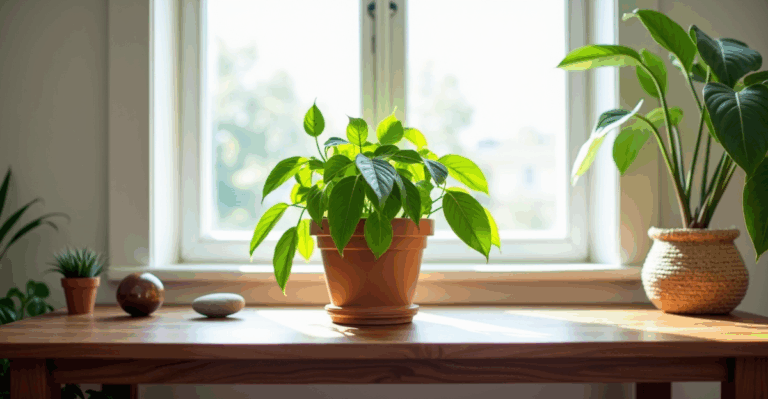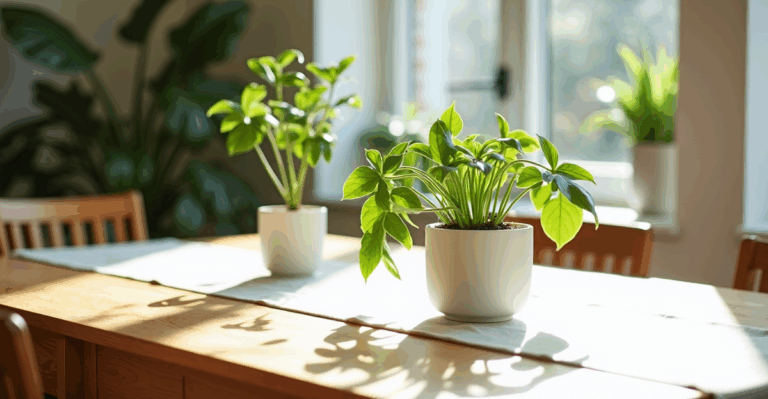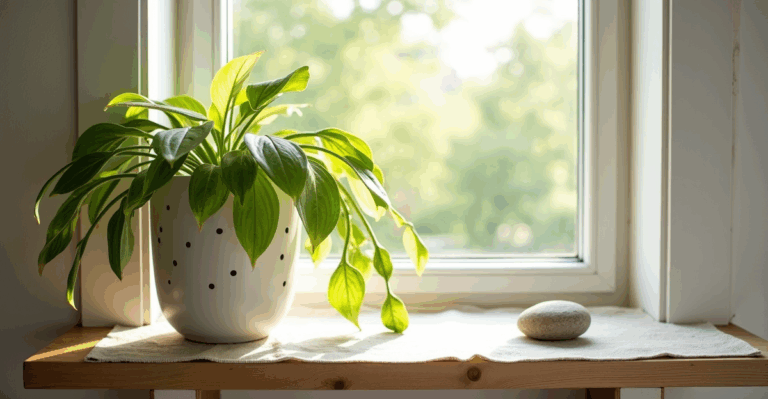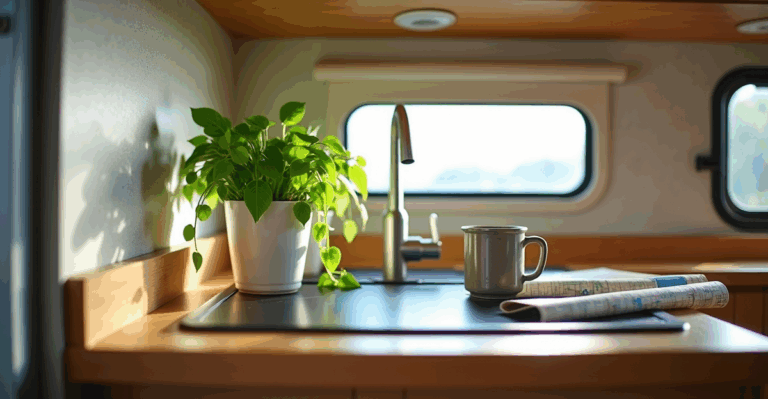How to Style a Coffee Table with Philodendron (No Natural Light? We’ve Got You)
Picture this: You’ve finally found that perfect, lush philodendron – maybe a Philodendron bipinnatifidum with its dramatic, split leaves, or a Philodendron hederaceum cascading gently. You place it on your coffee table, the centerpiece of your living room. A few weeks later, the leaves are smaller, the stems are stretching weakly toward the (non-existent) window, and the vibrant green is fading to pale. You’ve tried watering it, but it still looks sad. You’re not failing – you’re just working against a common, understandable myth: Philodendrons need bright sun to thrive. The truth? They’re classic low-light champions, if you give them the right conditions. And for those of us with north-facing rooms, windowless dens, or just a desire to style our coffee tables without relying on a sunny spot, grow lights are your secret weapon. Let’s make that coffee table look intentional, healthy, and full of life – even in the dimmest corner.
Why “No Natural Light” Isn’t a Dealbreaker (With a Plan)
The biggest mistake people make with philodendrons in low-light spots? Assuming they’ll magically thrive without any light. They won’t. Philodendrons are forest floor plants; they evolved to receive dappled, filtered light under a canopy. They don’t need direct sun, but they absolutely need some light for photosynthesis. Without it, they become leggy, lose color, and become vulnerable to pests like fungus gnats (which love overwatered, dark, damp conditions). The key isn’t avoiding the window – it’s creating the light they need where you want them.
Here’s what most miss: Grow lights aren’t just for supplementing. They’re the primary light source, and they change everything about how you care for the plant. You can’t water based on a window’s intensity; you have to adjust for the constant artificial light. Overwatering is the #1 killer here, because the plant isn’t using water as quickly in a low-light environment (even with grow lights), and the soil stays damp longer. It’s a delicate balance.
Your Low-Light Philodendron Styling Framework: Light, Care, and Form
Forget the “sunlight or bust” mindset. Your styling strategy should weave the grow light into the look, not hide it. Think of it as a functional, modern element, not an afterthought. Start with the light placement, then build your styling around it.
-
Choose the Right Grow Light (Not Just Any LED): This isn’t about a cheap, flickering bulb. You need a full-spectrum LED grow light with a sufficient PPFD (photosynthetic photon flux density) for your space. Aim for something that delivers at least 200 µmol/m²/s at the plant level for 10-12 hours daily. A small, adjustable clamp light (like a desk lamp with a full-spectrum bulb) positioned above the coffee table, 12-18 inches away, is ideal. Avoid cheap, dim, or overly warm-toned lights – they won’t support healthy growth and can look tacky. Pro Tip: Place the light on a shelf above the coffee table or on a small, sturdy side table next to it, not on the coffee table itself. This keeps the light source functional and prevents clutter.
-
Adjust Watering for the Light & Season: This is non-negotiable. Under grow lights, your philodendron is actively growing (unlike in deep shade), but the soil dries much slower than it would under a sunny window. Let the top 2-3 inches of soil dry out completely before watering again. Stick your finger in – if it feels cool and slightly moist at that depth, wait. Overwatering is the silent killer here. We’ve seen countless healthy-looking plants die because their owners watered on a schedule (like “every 7 days”) without checking the soil. In winter, with lower light and lower indoor humidity, you might need to wait even longer between waterings. Always flush with plain water every few months to prevent mineral buildup from tap water, especially since you’re using the light constantly.
-
Style Around the Light Source, Not Over It: The light needs to be visible and unobstructed. This means not placing a large vase or book directly on top of the light fixture. Instead, position the light above or beside the table. Style your coffee table around this element. Place the philodendron pot slightly off-center from the light source for a more dynamic look, or cluster it with a small, low-profile ceramic bowl holding a single stem of dried grasses, a smooth river stone, or a tiny sculptural ceramic piece. The key is keeping the light’s path clear. Real-Life Example: My friend’s coffee table in a north-facing apartment (no window) uses a small, adjustable clamp light mounted to the wall above the table. The philodendron sits to the right of the light’s beam, with a small stack of art books and a single, minimalist ceramic mug on the left – the light feels intentional, not an eyesore.
-
The Planter Matters More Than You Think (Especially with Light): Your pot choice directly impacts care and style. Avoid dark-colored pots (like deep black or charcoal) under grow lights. They absorb heat and light, making the soil hotter and potentially stressing the roots, while also making the pot look like a hole in the display. Lighter colors (cream, soft terracotta, matte white) or natural materials (like unglazed ceramic or wood fiber) are ideal. They reflect light gently, keep the soil cooler, and look much more intentional alongside the light. Crucially, ensure the pot has drainage holes (even if you use a cachepot). Without drainage, water pools in the bottom, causing root rot – a huge risk when you’re already prone to overwatering in low-light. A self-watering pot isn’t the answer here; you need to control water precisely, and the reservoir can mask overwatering.
The Edge Cases & Real Talk (No Sugarcoating)
- “But My Light Only Gives 8 Hours!” Consistent, lower-intensity light is better than sporadic, high-intensity light. A light on for 10 hours at 150 µmol is more effective than 4 hours at 300 µmol. Stick to a schedule (e.g., 7 AM – 5 PM).
- “The Leaves Are Pale!” This usually means too much light from the grow light, not too little. Move the light further away or reduce the hours slightly. Pale leaves under low light are normal; a pale plant under too bright light is stressed.
- “My Philodendron Looks Leggy!” This is almost always insufficient light (even with a light, if it’s too weak or too far away) or overwatering. Ensure the light is strong enough (check the PPFD specs) and move it closer if needed, and strictly follow the soil-dry rule. Prune leggy stems to encourage bushier growth.
- “I’m Using LECA/PON – Does This Change Anything?” Yes, but positively! LECA (clay pebbles) dries out faster than soil, so you might need to water slightly more frequently compared to soil under the same light conditions. However, because LECA is porous and drains well, overwatering is much less likely. Just remember: LECA needs regular flushing with plain water to prevent salt buildup from fertilizer or hard water, especially since you’re using light consistently. It’s a great fit for low-light setups where root rot is a common concern.
Why Your 3D-Printed Planter is the Perfect Fit
This is where the styling and function come together seamlessly. A standard ceramic pot might be too heavy for the light fixture, too dark, or just the wrong shape for your table. 3D-printed planters solve these problems perfectly:
- Weight & Stability: They’re lightweight enough to place securely on a coffee table without requiring a heavy, bulky base, yet sturdy enough to hold the plant and soil/LECA without tipping. No more worrying about the light fixture wobbling.
- Perfect Fit & Shape: We design them to complement modern coffee tables – not too wide, not too deep, with clean lines that let the light and the plant be the focus. The organic, subtle textures we create (like a soft matte finish or a gentle curve) look intentional, not like a generic pot.
- Color & Light Reflection: We offer subtle, light-reflective finishes (like soft cream or warm oat) that work with your grow light, not against it. They keep the soil cool, enhance the lighting effect subtly, and look cohesive alongside the light fixture.
The Final Touch: Making It Feel Like Your Space
Style isn’t about having the most expensive items; it’s about intentionality. Your coffee table with a thriving philodendron under a well-placed grow light feels lived-in, cared for, and designed. The light isn’t a hack – it’s the core of the design. Add a single, meaningful object on the table (a small framed photo, a smooth stone, a single book with a nice cover) and step back. It should feel calm, balanced, and inviting – not cluttered or forced. The philodendron isn’t just in the room; it’s part of the room’s light and mood.
Key Takeaways
- Grow lights are the primary light source for low-light philodendrons – choose full-spectrum, sufficient PPFD, and position them above/beside the table.
- Water based only on soil dryness (top 2-3 inches), not a schedule; overwatering is the top risk.
- Choose light-colored, well-draining pots (avoid dark colors under lights) – 3D-printed options offer perfect weight, fit, and style.
When you’re ready to grow your setup, explore our 3D-printed planters.
